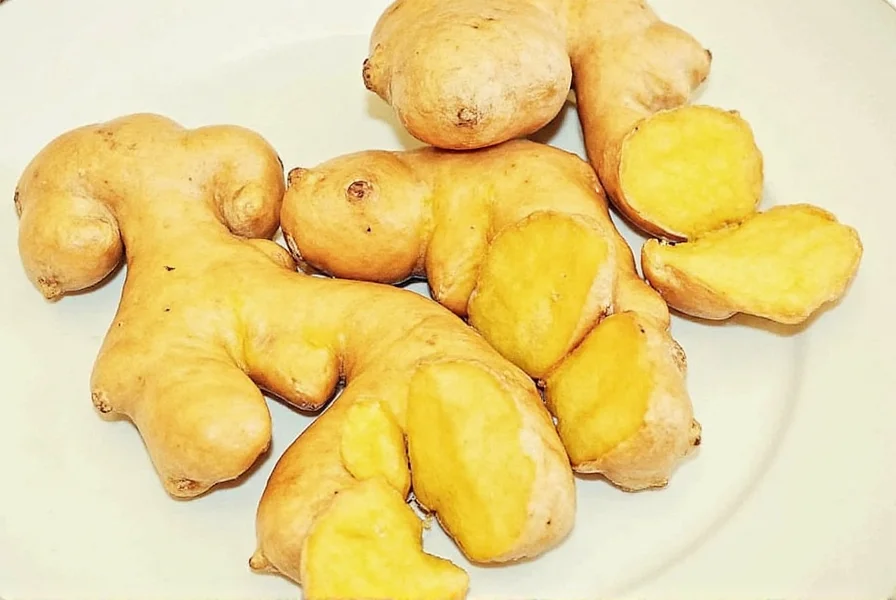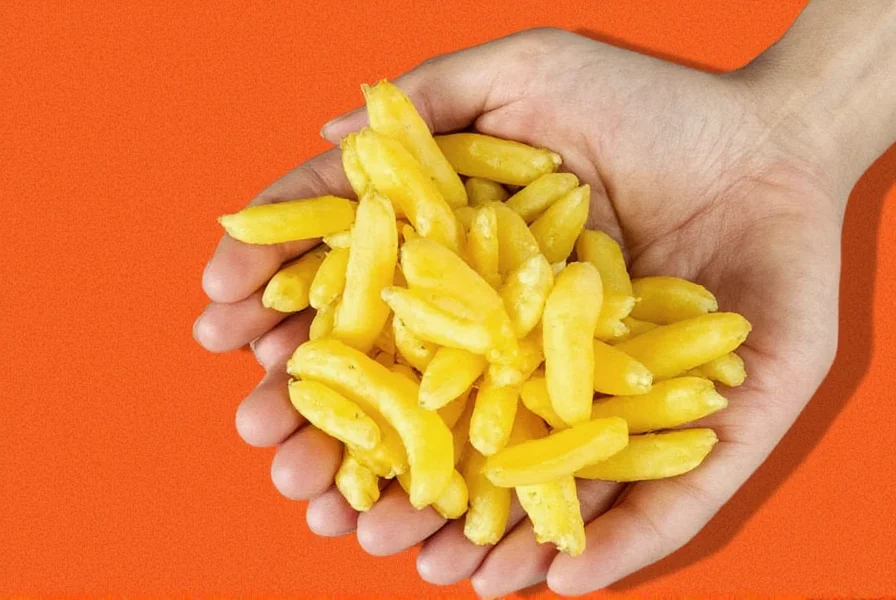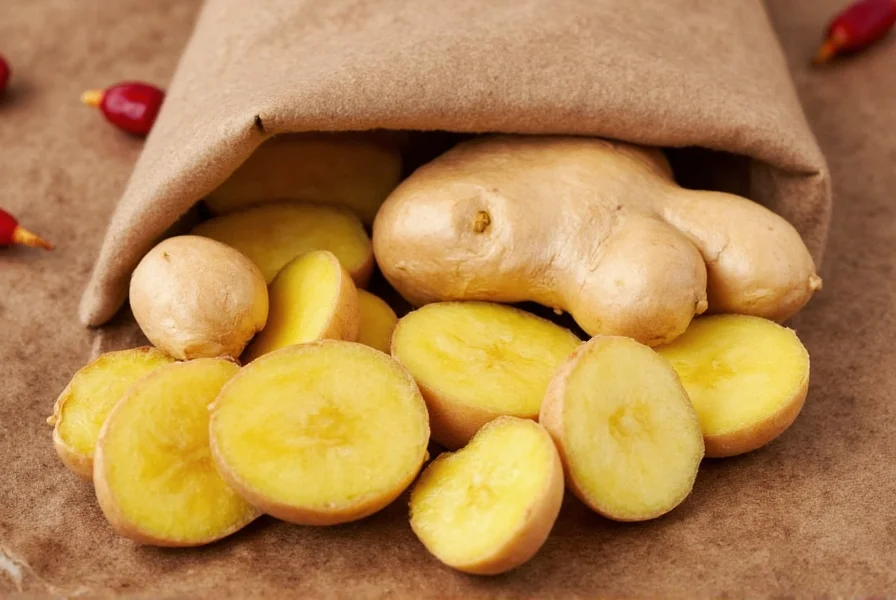Yes, ginger root is spicy, but not in the same way as chili peppers. Its distinctive warmth comes from gingerol compounds, creating a sharp, pungent sensation that builds gradually rather than delivering immediate fiery heat like capsaicin in peppers.
When you bite into a piece of fresh ginger root, you experience a unique form of spiciness that's both warming and slightly sharp. Unlike the burning sensation from chili peppers that hits immediately and fades, ginger's heat develops more slowly and lingers with a pleasant warmth. This characteristic makes ginger a versatile ingredient in cuisines worldwide, from Asian stir-fries to Caribbean jerk seasonings and even in soothing teas.
The Science Behind Ginger's Spiciness
Ginger's distinctive heat comes primarily from chemical compounds called gingerols, particularly 6-gingerol. These bioactive phenols activate the TRPV1 receptors in your mouth—the same receptors that respond to heat and capsaicin from chili peppers. However, gingerols interact with these receptors differently than capsaicin, creating that characteristic warming sensation rather than an intense burning feeling.
When ginger is dried or cooked, the gingerols transform into shogaols, which are approximately twice as pungent. This explains why dried ginger powder often tastes noticeably spicier than its fresh counterpart. The conversion happens through a dehydration process—when you slice or grate fresh ginger and let it sit, some gingerols naturally convert to shogaols, increasing the perceived heat.
| Compound | Found In | Scoville Heat Units | Sensation Profile |
|---|---|---|---|
| Gingerol | Fresh ginger | Varies (not measured in SHU) | Gradual warming, sharp but not burning |
| Shogaol | Dried/processed ginger | Approx. 2x gingerol | More intense, sharper heat |
| Capsaicin | Chili peppers | 10,000-2,000,000 SHU | Immediate burning sensation |
Factors That Affect Ginger's Spiciness
Not all ginger delivers the same level of heat. Several factors influence how spicy your ginger experience will be:
- Age of the root: Mature ginger (10+ months) contains higher concentrations of gingerols than younger "spring ginger," which has a milder, juicier profile
- Geographical origin: Ginger from different regions develops varying pungency levels based on soil composition and climate
- Preparation method: Grating releases more oils than slicing, while cooking transforms compounds
- Storage conditions: Refrigeration slows the conversion of gingerols to milder compounds
Interestingly, ginger's spiciness serves an evolutionary purpose. In its natural habitat, this pungency deters herbivores and insects from consuming the plant while attracting certain pollinators. The same compounds that create that distinctive warmth also provide ginger's well-documented anti-inflammatory and digestive benefits.

Ginger Heat vs. Chili Heat: Understanding the Difference
Many people wonder why is ginger spicy but not hot like peppers. The answer lies in the different chemical compounds and how they interact with your sensory receptors. While both activate the TRPV1 receptors, capsaicin binds more aggressively and persistently, creating that familiar burning sensation that water can't extinguish.
Ginger's heat works differently—it stimulates the receptors but doesn't bind as tenaciously, which is why milk isn't necessary to cool your mouth after eating ginger. The sensation is more of a warming tingle that spreads through your mouth and throat, sometimes even creating a pleasant sensation in your stomach. This characteristic makes ginger particularly valuable in traditional medicine systems where its "warming" properties are utilized for digestive and circulatory benefits.
Managing Ginger's Spiciness in Cooking
If you're working with particularly pungent ginger and want to moderate its heat, several techniques can help. Peeling ginger more thoroughly removes some of the concentrated oils just beneath the skin. Soaking sliced ginger in cold water for 10-15 minutes can leach out some surface compounds. When cooking, adding ginger later in the process preserves more of its fresh heat, while adding it earlier allows more transformation into milder compounds.
Conversely, if you want to maximize ginger's spiciness, grate it finely and let it sit for 5-10 minutes before using—this allows more conversion to shogaols. Drying ginger in a low oven (150°F/65°C) for several hours creates an even more concentrated spicy flavor as the gingerols transform.

Culinary Applications of Ginger's Unique Heat
Chefs worldwide leverage ginger's distinctive spiciness in sophisticated ways. In Japanese cuisine, thinly sliced young ginger (gari) serves as a palate cleanser between sushi courses, its mild heat refreshing the taste buds. In Indian cooking, ginger paste forms the aromatic base of many curries, where its heat mingles with other spices rather than dominating.
Understanding is ginger spicy when cooked is crucial for recipe development. When heated, ginger's volatile compounds transform—some dissipate while others convert to more stable forms. This is why ginger cookies have a different warmth profile than fresh ginger tea. The Maillard reaction during cooking also creates new flavor compounds that interact with the remaining gingerols, producing complex notes beyond simple heat.
Health Implications of Ginger's Spiciness
The same compounds that make ginger spicy also contribute to its health benefits. Gingerols have demonstrated anti-inflammatory properties in numerous studies, which is why ginger is commonly used to alleviate nausea, particularly during pregnancy or chemotherapy. The warming sensation you feel actually corresponds to increased blood circulation in the affected areas.
Unlike capsaicin, which can irritate sensitive stomachs, ginger's compounds generally soothe the digestive tract while still providing that characteristic warmth. This dual action explains why ginger tea is such an effective remedy for both colds and digestive discomfort—the heat provides symptomatic relief while the compounds address underlying inflammation.
FAQ: Understanding Ginger's Spiciness
Is fresh ginger more spicy than dried ginger?
Dried ginger is typically more pungent than fresh ginger. When ginger dries, gingerols convert to shogaols, which are approximately twice as spicy. This is why recipes often specify different measurements for fresh versus dried ginger—1 tablespoon fresh ginger generally equals about 1/4 teaspoon dried ginger powder in terms of heat intensity.
Why doesn't ginger burn like chili peppers?
Ginger and chili peppers activate the same heat receptors (TRPV1), but through different compounds—gingerols versus capsaicin. Capsaicin binds more aggressively and persistently to these receptors, creating a burning sensation that water can't extinguish. Gingerols stimulate the receptors differently, producing a warming sensation that spreads gradually and doesn't require dairy to neutralize.
Does cooking ginger make it less spicy?
Cooking ginger transforms its spiciness rather than simply reducing it. Heat converts some gingerols to zingerone, which has a sweeter, less pungent profile, while other compounds transform to shogaols, which are more pungent. The net effect depends on cooking method and duration—brief cooking preserves more fresh heat, while prolonged cooking creates more complex flavor notes with moderated sharpness.
How can I reduce ginger's spiciness in a dish?
To reduce ginger's spiciness, try these techniques: peel more thoroughly (the highest concentration of oils is just beneath the skin), soak sliced ginger in cold water for 10-15 minutes before use, add it later in the cooking process, or balance with sweet or acidic ingredients. For immediate relief while eating, dairy products or something sweet can help counteract the sensation, though ginger's heat typically doesn't require such measures like chili heat often does.











 浙公网安备
33010002000092号
浙公网安备
33010002000092号 浙B2-20120091-4
浙B2-20120091-4